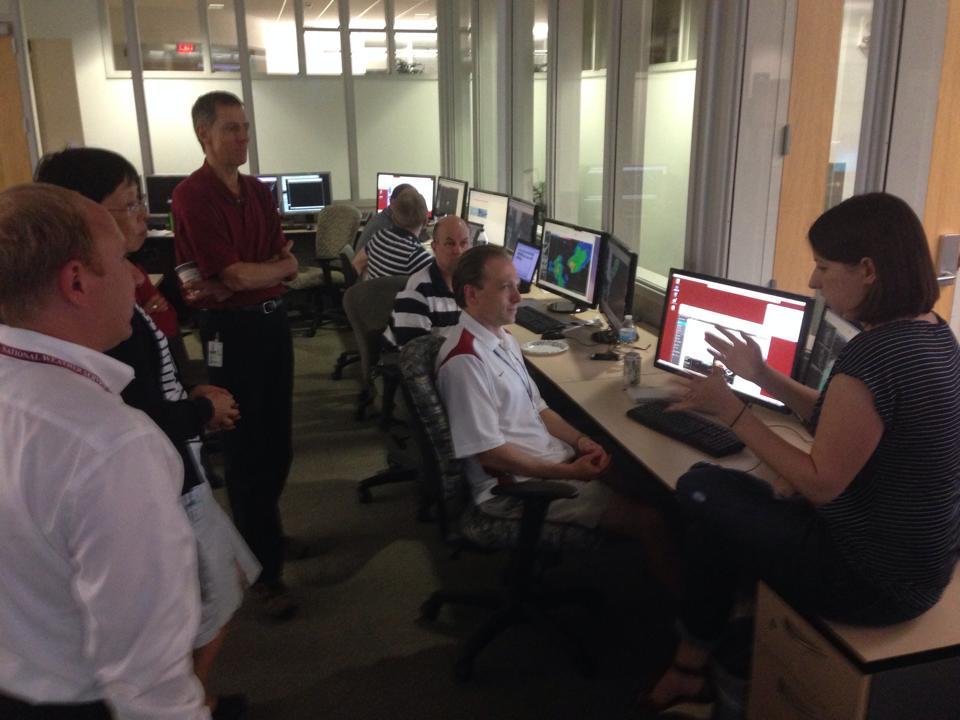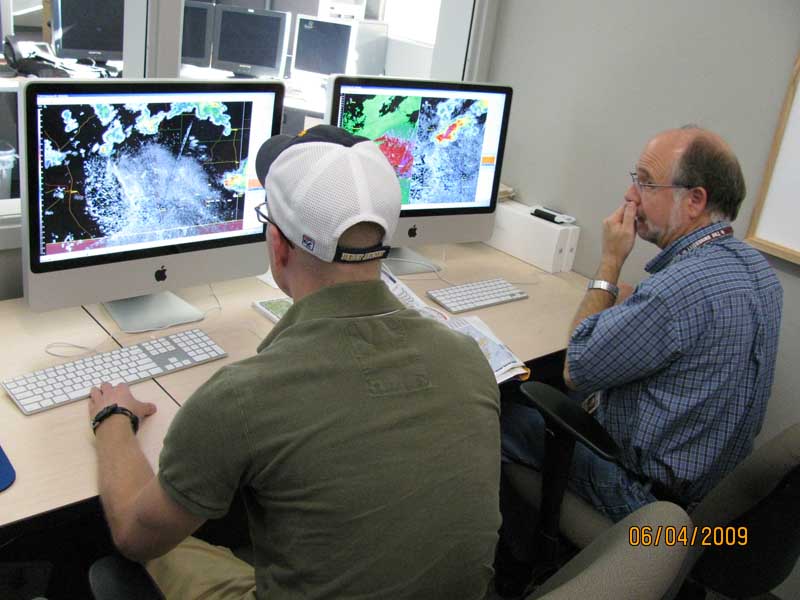
As America’s spring storm season ramps up, NSSL scientists are preparing to host dozens of researchers, modelers and forecasters from around the world to work side-by-side on improving severe weather forecasts and warnings. The gathering is part of the annual NOAA Hazardous Weather Testbed Spring Experiment, held from May 9 through June 10, 2011 at the National Weather Center in Norman, Okla.
The two branches of the NOAA Hazardous Weather Testbed (HWT), the Experimental Forecast Program (EFP) and the Experimental Warning Program (EWP), have independent but complementary goals during the five-week experiment.
The Experimental Forecast Program is focused on the use of computer models of the atmosphere to improve predictions of hazardous thunderstorm events from a few hours to a week in advance, and over several counties to the continental United States. During the 2011 Spring Experiment, the primary focus will be on using high-resolution weather models that have been designed to predict individual thunderstorms. Visiting forecasters will determine if these models help them detect and predict hazardous convective weather. A new emphasis will be placed on benchmarking the ability of these models to predict details of when and where the first storms will form.
The Experimental Warning Program targets detecting and predicting severe weather hazards on a smaller scale: from a few minutes to a few hours and over several counties to fractions of counties. Participants in the 2011 EWP will test and evaluate projects geared toward National Weather Service forecast office severe thunderstorm warning operations. A real time hazardous weather analysis and detection system using data from the WSR-88D network and from model analyses and forecasts will be evaluated. Multiple GOES-R applications, including lightning mapper products, and the performance and utility of an experimental forecast model will be assessed.
The Spring Experiment has been the cornerstone of the HWT for more than a decade, where forecasters are provided with a first-hand look at the latest research and concepts and products. At the same time, research scientists gain valuable understanding of the challenges, needs and constraints of front-line forecasters.
NSSL, the NWS Storm Prediction Center and the National Weather Service Forecast Office in Norman, Okla. sponsor the Spring Experiment. The end result meets another NWS goal to increase the development, application and transition of advanced science and technology to operations and services.


